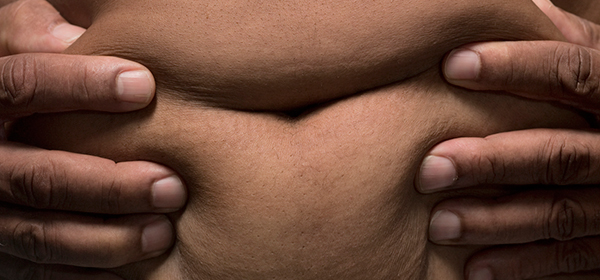Is it worse to be overweight all over or just carry extra weight around the middle?
New research has shown that those with a spare tyre around the middle of an otherwise healthy-weight body have a higher risk of death than those who are overweight.
Over a period of 14 years, US scientists analysed the data of 15,184 American men and women aged, on average 45. They discovered that the survival record was worse for individuals who had generally normal weights but bulging bellies, than overweight or obese people.
The researchers, led by Dr Francisco Lopez-Jiminez from the Mayo Clinic, labelled this condition ‘central obesity’. They identified that this type of obesity is linked to a buildup of fat around internal organs, which can lead to other health concerns. These concerns include higher cholesterol levels and blood fats, inflammation and insulin resistance, which can lead to diabetes.
Men in the study with normal-weight, central obesity were twice as likely to die as men who were classified as overweight or obese, as per Body Mass Index (BMI) standards. For women, the risk that came with having a spare tyre was lessened, but still represented a 40 per cent increase in the risk of death.
The study was published in the journal Annals of Internal Medicine and said: “Normal-weight US adults with central obesity have the worst long-term survival compared with participants with normal fat distribution, regardless of BMI category, even after adjustment for potential mediators.”
“Future studies should focus on identifying factors associated with the development of normal-weight central obesity and better understanding the effect of normal-weight central obesity on health outcomes,” said the study.
Participants of the study were invited to be part of further research and were enlisted to participate in the third National Health and Nutrition Examination survey (NHANES III), which is a US initiative that gathers health and lifestyle data.
Read more at The Guardian
Opinion: Old news, new chance
It’s well-known that carrying around excess weight comes with a plethora of health concerns. We’ve heard them all before – diabetes, heart disease, cancers, osteoarthritis, reproductive problems and gallstones.
What’s new is that now research is starting to define how fat on certain areas of the body is associated with particular risks. This is ground-breaking because it means that scientists and doctors may be able to more directly identify the potential health risks for particular individuals, based on where their fat develops.
Central obesity is particularly associated with type 2 diabetes, which greatly increases the risk of having a heart attack or stroke.
According to Diabetes Australia, 280 Australians develop diabetes every day. That’s one person every five minutes. Type 2 diabetes represents 85 – 90 per cent of all cases of diabetes and usually develops in adults over the age of 45.
That’s an epidemic and the biggest challenge confronting Australia’s health system, costing us an estimated $14.6 billion annually.
It’s not rocket science that the way to reduce your risk of developing diabetes is to maintain a healthy weight and lifestyle. However, if you’re already at a place of risk, losing weight and becoming healthy can seem like too much of a challenge for some people.
If this sounds like you, why not check out our previous articles designed to help you get on the right track?
How to fight middle-age spread
Weight loss for your body type
Did the results of this study surprise you? If you have a spare tyre, will the research findings prompt you to make some lifestyle changes? What do you think can be done to tackle Australia’s diabetes epidemic?

